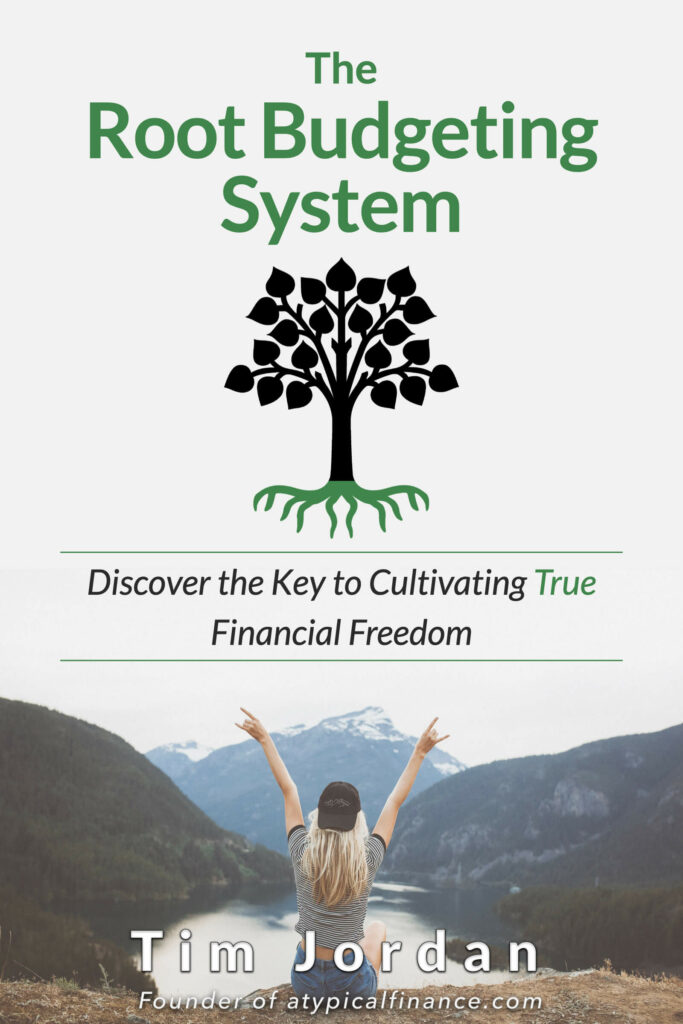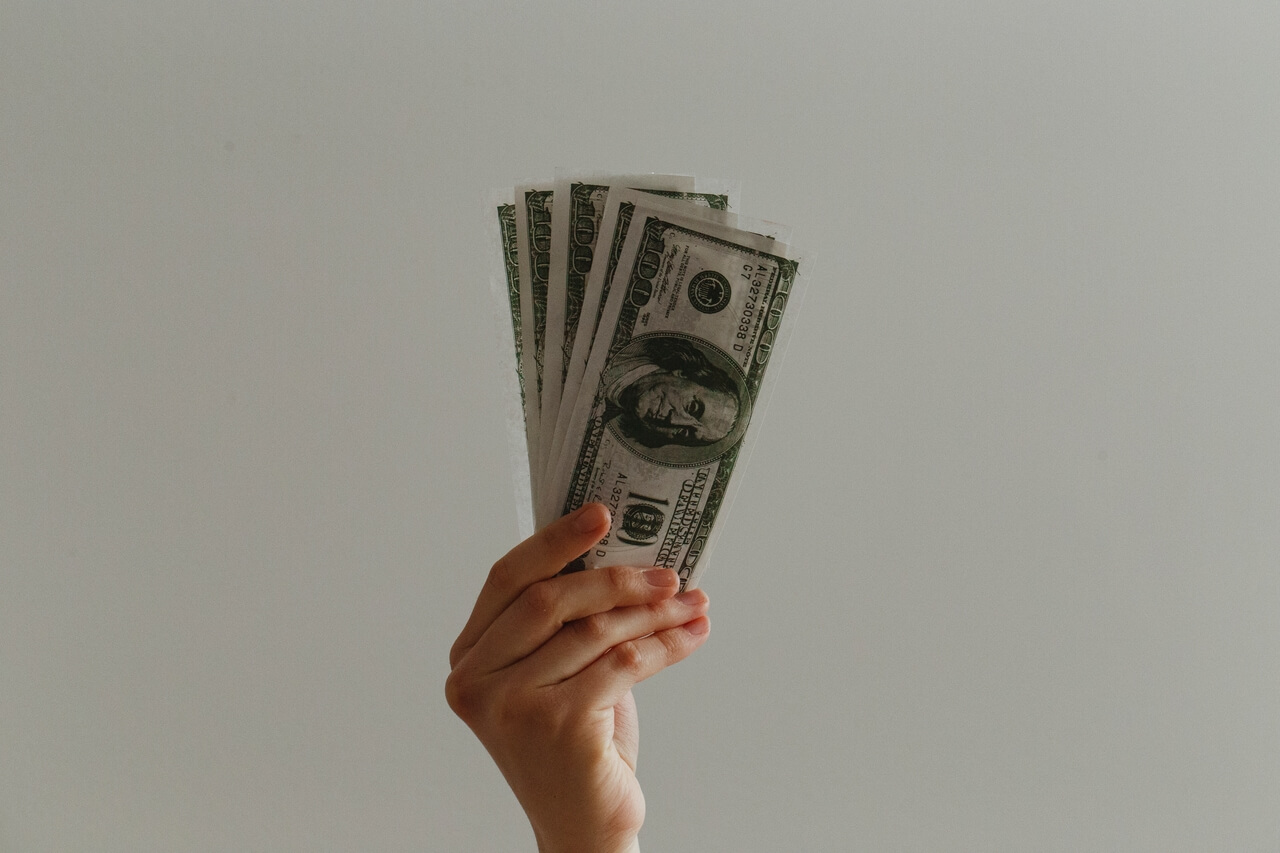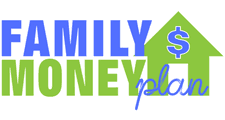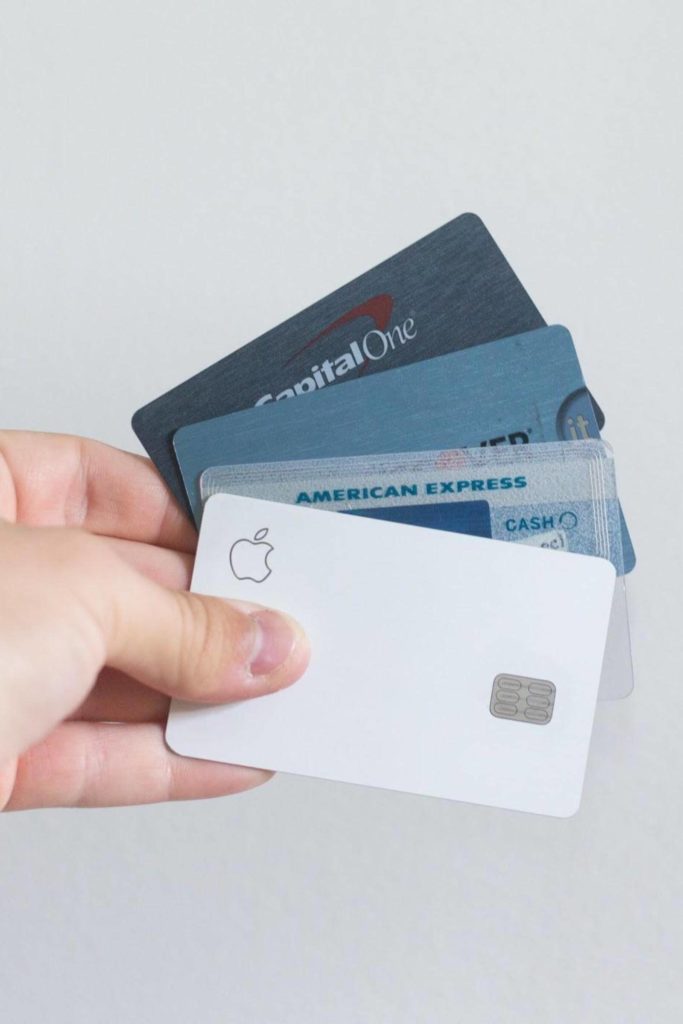Debt can be a silent killer when it comes to your hopes of having financial freedom. Paying off your debt can launch you toward your version of financial freedom faster than you thought possible.
But it’s a specific kind of debt that needs to be paid off. And that’s what I’m going to teach you how to pay off.
That debt is unnecessary debt.
Necessary and Unnecessary Debt: Good and Bad Debt Relabeled
I’ve introduced my clients to different terms for the types of debt we can take out. Those terms are “necessary” and “unnecessary” debt. The definitions are quite simple.
Necessary debt is debt that is necessary for you to take on in order to earn more income, such as a business loan or loan on an investment property.
Necessary debt also covers debt we need in order to make a large purchase that will serve our financial goals or needs.
Think about it. For most of us, a mortgage is going to be necessary debt to buy a house since most of us don’t have enough to pay for it in cash.
Unnecessary debt is debt that you don’t need to take out to pay for the things you need or want.
Credit card debt falls under this category in most cases. Financing vacations on a credit card or financing items you don’t need just to keep up with the Joneses are two prime examples of unnecessary debt.
Changing the labels we give debt takes the emotion out of carrying debt.
For bad debt, if things are hopeless, we feel there isn’t a point in changing the situation. Removing the label allows us to always have hope.
For good debt, we no longer feel a bunch of guilt when something doesn’t work out.
It’s no longer a conversation of “Well, this was supposed to be good debt and give me a guaranteed return. I’m done with this!”
It is this unnecessary debt that can cause the most problems in our personal finances.
Unlike necessary debt that can generate income, unnecessary debt simply adds to our monthly costs without providing much value.
It’s this reason why I focus on unnecessary debt—and why I don’t think all debt is from the devil.
It is unnecessary debt that should be paid off as quickly as possible and avoided for the most part. It is the unnecessary debt that can silently kill our budgets.
Let’s look at both the long-term and short-term effects of carrying unnecessary debt.
Carrying Unnecessary Debt: A Long-Term Outlook
Most unnecessary debt is acquired using credit cards. They are relatively easy to get and even easier to use. #swipe
According to Investopedia, the current average credit card rate is 21.99%.
Because credit card interest rates are usually much higher than other forms of debt, keeping it long-term sees you paying much more for the items you purchased than the actual sticker price.
Even if something is on sale, if you keep paying the minimum payments and let that balance stay on the card for a while, you’re going to pay above and beyond what even the regular price was for that item.
Thankfully, the Credit CARD Act of 2009 now requires credit card companies to disclose to you on your bill how long it will take you to pay your balance off if you were only making the minimum payments.
Your credit card statement will have a section that shows you how long it will take to pay off your balance if you were to only make minimum payments. This section of your statement gives you an indication of how much you’re actually paying for something with interest.
A Long-Term Example
Let’s say you have $6,000 of credit card debt from items that you’ve purchased over the past year.
Your credit card has a below-average rate of 15%. That’s a good rate compared to anything higher, but a terrible rate compared to paying for things without debt.
Minimum payments are typically 1%-2% of the balance so let’s calculate your starting minimum payment at $80. Here’s the breakdown:
| Balance | Monthly Payment | Months Until Payoff | Total Interest Paid | Total Cost |
| $6,000 | $80 | 224 | $11,885 | $17,885 |
Paying the minimum on that credit card balance will take you more than 18 years to pay it off and you’ll be paying nearly triple what the starting balance was!
Even a balance of just $1,000 has long-term money consequences. Take a look:
| Balance | Monthly Payment | Months Until Payoff | Total Interest Paid | Total Cost |
| $1,000 | $30 | 44 | $301 | $1,301 |
Even for just $1,000, you’re increasing the actual cost by nearly a third by only making the minimum payments.
The long-term outlook for continuing to carry unnecessary debt doesn’t look great.
Your debt isn’t making you money to offset the cost of carrying the debt. You just bought too much stuff and are paying more for it than you thought you were.
Carrying Unnecessary Debt: A Monthly Outlook
It’s not just the long-term outlook that can be painful with unnecessary debt. You are actually paying for it on a monthly basis.
Unnecessary debt will stifle your personal finance growth, prevent you from spending money on what you want, and force you to do things with your money that you don’t want to do.
Let me tell you a personal story of what carrying unnecessary debt can do to limit you.
In 2012, the same year I, ahem, acquired $839 of monthly spending on debt payments, my job at the time was not going so well.
I had been a restaurant manager for a couple of years at that point, and it was starting to take its toll on me with the long hours and lack of sleep. There are times where I’d be home at 1:30 in the morning and not asleep until after 2:00 AM after winding down.
My wife worked Monday through Friday during the day while almost all my shifts were at some point in the evening. I didn’t see her much.
My older daughter was just turning three and I couldn’t eat dinner with her most nights or put her to bed. She was in pre-school which meant late nights at work and then getting up at 7:00 AM so I could get her to school.
I was constantly sleep-deprived, cranky, and miserable. I did not like my job at all. I was a mess. So I did what anyone in a position like mine would do—I searched for a new job.
The Job Hunt
As I searched for a job, I realized if I wanted to get out of the restaurant industry and into a new field, I would have to take a large pay cut.
I started looking at my budget to make sure we could still make ends meet.
We couldn’t. I was deflated and depressed. What’s worse is that we couldn’t make it on a smaller salary because of the choices that I had made.
Staring back at me on my budget was the reason that I was not able to find a new job. That $839 I was spending on repaying my debt each month.
I had a car payment, a Disney Vacation Club loan, and all the furniture I bought for our new home.
It was now trapping me where I was. It was forcing me to stay in a job I didn’t like—actually, a job I hated.
I needed to get out, but I couldn’t.
It took me another two years to finally be able to get to a point where I was able to quit my job and take that pay cut that was necessary for me to change fields.
Two years of being miserable. Two years of blowing my money on video games I never played and didn’t like just to feel good.
Two years of being a jerk to my wife and yelling at my kids.
I’m convinced that if I would have let it go on for much longer, my marriage would have ended. That’s how bad it got.
All because I had trapped myself in a certain lifestyle with unnecessary debt. That’s what it can do to you.
Think About Your Own Situation
Think about your own situation.
Buying that new car and paying $400 a month may tip you over the edge of comfortability and financial freedom.
You may no longer be able to do what you need to do, spend how you need to spend, or use your money how you want to by taking on a piece of unnecessary debt.
Before you ask, I am not against buying new cars. I buy my cars brand new.
We get a GM employee discount thanks to my father-in-law and we keep our cars for at least ten years after purchasing so it’s worth it for us.
What I am against is buying things that will derail your financial freedom train.
True financial freedom is being able to do what you want with your money.
Financial freedom is being able to switch jobs when you need to for any reason at all.
Maybe you’re treated unfairly or just want to see your family more like I did. Your unnecessary debt has the power to keep you in situations you don’t want to be in.
I couldn’t switch jobs because my monthly debt repayment was so high. What are the monthly payments from your unnecessary debt keeping you from doing?
Add up your payments and imagine what life would be like without them.
The monthly cost of holding debt can seem even more painful than the long-term consequences because you’re feeling the pain now.
You don’t feel the pain of overpaying in interest over years of the loan, but seeing that monthly payment come out of your budget every month can be great motivation for paying off your unnecessary debt.
Before You Get Started Paying Off Debt
If you’re going to pay off debt, you’re going to want to do it the right way. There are two things you want to try and have in place before you start going all in on paying off your debt.
- A budget—even just a quick one. Remember, your budget is the root of your entire money management system, and like a tree’s roots, it is used to anchor and supply every other area of personal finance. Even just creating a quick and dirty budget for yourself will help. Using your budget to plan your debt payoff strategy keeps you from overextending yourself so you’re not using your unnecessary debt to pay for living while simultaneously trying to pay a lot on your debt. It also ensures you’re balancing out your debt payoff with your spending. The last thing you want is to get burnt out managing your money because you’re not allowing yourself to spend on what you want. Only sacrifice what you can handle in favor of paying off debt.
- An emergency fund—even just a small one. I recommend having some sort of small emergency fund in place before focusing on paying your debt, especially if you decide to sacrifice some spending to be able to do it. As you are paying off your debt, you don’t want anything to derail your get-out-of-debt train. Having an emergency fund ensures that if you have some sort of emergency—like a car repair or home repair—you will be able to take care of it no problem without derailing your debt payoff plan.
In order to pay off your debt easily and quickly, I’m going to take you through a series of steps to get there.
We’ll go through these steps you can take to plan out your debt strategy, and then I will give you some tips on increasing your income to accelerate that even further.
Let’s get started!
Step 1: Figure Out How Much Total Debt You Have
This is the first step to paying off your debt. You have to know exactly how much debt you have.
You wouldn’t believe how many people don’t know the balances on their credit cards.
I’m not saying you need to memorize it—let’s not get crazy here—but you need to write it down in a place that’s easily accessible in an organized way.
We’ll group all of your debt together in one place so you are able to see your debt payoff strategy.
To complete this step, create a table either in a spreadsheet program or written out with the four columns. Label the columns with the following titles:
- Debt Name
- Minimum Monthly Payment
- Total Balance
- Interest Rate
Go through each of your debts and list them on your table then total up the balance and monthly payment columns.
Make sure you are listing every single debt you have—including your student loans. Include everything but your mortgage.
Your mortgage is going to be your largest debt so seeing that balance lumped together with your other debt is going to be discouraging.
Besides, we are mostly focusing on paying off your unnecessary debt here. Once that is all done, move on to step two.
Step 2: Decide How Much Money You Have to Put Toward Debt
Simply put, how much of your extra money each month can you put toward debt?
Do you want to put all of your extra money toward it? Do you want to put 80% or 90% toward it and leave the other 10% or 20% as a buffer?
If you’re already spending money on the things you value, you could put all of your extra money toward debt. But this really is about your comfort level.
If you need a small buffer, by all means, keep a little bit as a buffer. Just remember, the more you put toward your unnecessary debt, the less you will pay in interest and the faster you will pay it off.
Step 3: Choose Your Payoff Strategy
There are three main debt payoff strategies. All of them focus on a different area of your debt.
Read through the descriptions below and decide which one you want to use and which one is best for your situation.
The Traditional Debt Snowball Method
The traditional debt snowball method refers to snowballing your total balance on each of your debts from smallest to largest.
Just like a snowball gets bigger as it rolls down the side of a mountain, you start on the debt that has the smallest total balance, move on to the next smallest balance after the first is paid off, then to the third smallest balance, so on and so forth.
The debt snowball method takes human psychology into consideration and gives you small wins at the start so you can stay motivated paying off your debt.
It gives you momentum like a snowball!
Interest rates don’t matter in this method and it isn’t designed to minimize how much interest you pay in the long-run.
To get set up with the debt snowball, sort your debt list from step one in order from lowest balance to highest balance.
Then, pay only the minimum payments on every debt except for the debt on top of your list. Again, the debt on top should have the lowest total balance.
Put everything you have into that top debt. When that debt is paid off, put everything you have—including the payment from the first debt—into the debt with the second-lowest balance.
Repeat this until all your debt is paid off. In step five, we’ll go into choosing a reward that can help psychologically boost the effect of the small wins that you get from paying off your debt.
The debt snowball method is perfect for those of you who don’t have much money to put toward your debt.
It’s also perfect if you want those small wins to help keep you motivated. This is a huge part of being human so this may be the best method for you.
The Debt Avalanche Method
For those of you who love math and numbers (if these people even exist—kidding…kind of), the Debt Avalanche Method is a great option for you.
If you figured out how much interest you’ll be paying over the life of your debt and it’s just killing you, try this method out.
The Debt Avalanche Method only looks at the interest rate of your debts. This method helps you pay the least amount of interest overall.
To get started, list out your debts in order of highest interest rate to lowest. Remember, balance doesn’t matter for the order—only your interest rate.
Then, start to pay your debts down from top to bottom. When the top one is paid off, move on to the next highest interest rate.
If you’re really into math, you could take this a step further and figure out exactly how much interest you will be paying on your various cards, even if you were not starting with the balance with the highest interest.
For example, you might run the numbers and figure out that your debt with the highest balance but only the third highest interest rate is actually the debt that will require the most interest.
It’s your choice if you want to put that one first.
Unless you really want to spend the time on this portion, I don’t recommend it because it can prevent you from starting.
There comes a point where you just have to stop preparing and just start, even if the numbers aren’t perfect.
Highest Monthly Impact Method
I call this method the Highest Monthly Impact Method. This method looks only at the monthly payments you’re making to each debt.
Let’s say you bought a $2,000 refrigerator on a 12-month no-interest credit card. In order to pay it off before paying interest, your payment would be $166.67 per month.
That $166.67 monthly payment might free up a lot of space in your budget by paying it down first.
Sometimes it’s best to look at what you’ll be saving per month, rather than what you will be saving in interest or just focusing on the balances.
To get started with this method, list your unnecessary debt in the order from the highest monthly payment to the lowest monthly payment. Now, start paying off that debt!
You are also free to switch this around if you want to and combine it with either the Debt Snowball or Avalanche (or both!) to maximize its personal value to you.
Maybe that $166.67 monthly appliance payment is looking good to get rid of, but you might also have a $1,000 debt that may be costing you about $100 a month.
You could pay down the $1,000 because it won’t take you as long and free up $100 rather than the $166.67. The choice is up to you in how you want to work it with your budget.
This method is great for you if you really want to free up some monthly income.
I’ve paid down my debt this way before and really recommend it for people that are struggling to find some breathing room in their budget.
It’s just nice to have that extra cash flow every month.
For some of you, paying off a credit card costing you $150 a month means no longer making a choice between groceries and a haircut you desperately need.
After choosing your method, move on to step four.
Step 4: Snowball Your Payments
The Traditional Debt Snowball Method looks at your total balance from smallest to largest. But there is a snowball you will want to implement regardless of what order you pay down your debt.
I highly recommend snowballing your payments.
Snowballing your payments simply means that you take the minimum payment, plus the extra money you were using to pay off a debt, and put all of it toward the next debt.
For example, let’s say your first credit card you were paying off has a minimum payment of $50, and you have an extra $500 that you’re using to pay off your unnecessary debt quickly.
So your entire payment on that first credit card is $550.
Let’s also assume that the minimum monthly payment on the next credit card up to bat (or to get swung at) is $65.
After paying off that first card, you will want to put all $550 toward the payment rather than just the $500 extra you had before.
This brings your payment on your second credit card up to $615 rather than $565. So it would look like this to start:
| Total Balance | Minimum Payment | Extra Money | Total Payment | |
| Credit Card 1 | $5,000 | $50 | $500 | $550/month |
| Credit Card 2 | $6,500 | $65 | $0 | $65 |
Note: To simplify, this chart isn’t including interest.
All your extra money is being funneled toward your first credit card.
After about nine months of paying extra money on Credit Card 1, you’ve got that one paid off (nice job!) and the balance on Credit Card 2 is down to about $5,915 ($65 x 9 months).
Now, funneling all your extra money—plus the $50 payment on the now-paid-off Credit Card 1—gives you the new total payment on Credit Card 2. Check it out in the table below.
| Total Balance | Minimum Payment | Extra Money | Total Payment | |
| Credit Card 1 | $0 | $0 | $0 | $0 |
| Credit Card 2 | $5,915 | $65 | $550 | $615 |
Note: To simplify, this chart isn’t including interest.
In this scenario, not including interest, you’d be debt-free in roughly 20 months. That’s pretty good!
Snowballing your payments will work with any method you choose to pay off your debt.
You’re already used to the money being gone anyway so might as well continue to use it to pay off your debt.
Since you paid off a credit card in this scenario, you deserve a reward. Let’s move on to step five!
Step 5: Set Up Your Reward System
We all know by now that money can be highly psychological. It’s hard to stick to the plan because we get discouraged.
That’s why you need to spend money on yourself in this process.
Yes. I said spend money while paying off your debt.
You want to build in a system that will allow you to spend money in the midst of your debt payoff. You don’t want to wait until you’re completely done to reward yourself.
Build in a reward system that will help you stay motivated to keep going.
In goal setting, these are called milestones. It gives you something to look forward to while taking on the monumental task of paying down your debt.
As you’re paying down your debt, remember this—success is not the end result.
Paying off your debt is the sum of a lot of little successes that are leading you to that point. It’s important to celebrate those little successes.
Here are the things you’re going to want to decide on for setting up your rewards:
- Decide on when you want to reward yourself. Is it when you’ve paid off each individual unnecessary debt (like a credit card)? Is it when you’ve paid off a certain dollar amount? It could be every time you get to the $5,000 mark on your debt you reward yourself.
- Decide how much you will spend on your reward. What are you going to allow yourself to spend on your reward after you hit the milestone you’ve set for yourself? As a guideline, I like to spend no more—and ideally, no less—than the extra money I’ve been putting toward my debt. So if you’re putting $500 each month toward your debt beyond the minimum payments, you can spend up to $500 on yourself when you hit your milestone. The amount is up to you and you should do what is best for you.
- Decide what your reward will be. Ideally, this should be something you value, but it could be something that you just want to spend money on. What is something you want more of in your life? What is something you’ve always wanted to splurge on?
Here are a couple of guidelines for your rewards.
First, to go along with the second bullet point above, make sure you’re not spending more on your reward than one month’s worth of extra money to splurge.
The last thing you want to do is go into more debt to reward yourself for paying off your debt.
You can, however, combine it with other categories in your budget like eating out or vacation if that’s what your reward is going to be.
Second, make it something meaningful and fulfilling.
While you don’t have to spend money on what you value to splurge, I highly recommend you do.
It will feel a lot better if you are actually satisfied with your reward.
Imagine using your extra money to take a short weekend away with friends or a significant other and making memories that will last well beyond that one weekend.
Splurging on something of value to you not only fulfills you but it gives you rest and recharges you to get through the next leg of your debt payoff journey.
After you decide on your reward system, it’s time for step six!
Step 6: Consider Sacrificing to Pay Off Debt Sooner
If you really want to pay off your debt fast, consider what you can sacrifice in the short-term to make that happen.
Will you sacrifice time to work overtime or side hustle to bring in some extra money? Will you sacrifice spending on some of your expenses and put that extra money toward your debt?
The choice is yours. Here’s exactly what to do.
- Look at what you can sacrifice and how much. If you want to sacrifice time, figure out how much overtime you can work each month and how much extra income that would allow you to put toward your debt. For sacrificing spending, add up what you could realistically sacrifice to pay off your debt. Remember, you don’t want to get burnt out. For example, you could sacrifice $50 from your eating out budget and get by on slower internet speeds for a short time, saving you another $50.That would give you an extra $100 per month to add toward your debt. You could give yourself a “one drink” limit when going out with friends (or just drink water) and save yourself a bunch of money that way too. Take a look at what makes sense for you and add it up.
- Calculate how much time and interest you’d save by using that new extra money. Using the extra money from the previous bullet, use a debt payoff calculator (like this one from Credit Karma) to determine how much faster you’d have your debt paid off by using that extra money. Does it knock six months off? Three? Only one month? Next, how much interest does it save you? Does it save you $100? $500? Even more than that? It’s more than likely that if your debt is saving you only a couple of month’s worth of time, it probably isn’t saving you a ton of interest. But every little bit helps!
- Decide if the sacrifice is worth it. If the extra money you can sacrifice only knocks off a month or two and not much interest, it may not be worth it to actually make the sacrifice. If it saves you six months of time and a good amount of interest, definitely consider it for the short-term. It’s really advantageous to building the life you dream of to be rid of unnecessary debt.
Step 7: Set Everything Into Motion by Automating
After step six, you should now have your definitive amount that you’ll be using to pay off your debt.
It’s time to put this plan into action!
Your last step is to set up and automate everything. Using automation takes your willpower out of the picture so it takes you no effort to follow the plan.
In step three of your debt payoff plan, you chose your debt payoff strategy and listed out all your debt in the order you plan to pay it off.
Since your minimum payment is already in that list, simply put your total payment (minimum payment + extra money) next to the debt at the top of the list.
Now, run through your list of debts, sign in to each online portal (or just your bank’s if you use their bill pay system), and automate every single payment.
So if you’re paying $500 on your list’s top debt, you will automate a payment of $500 until it’s paid off.
Every other credit card will have an automated payment equivalent to the current minimum payment until your first credit card is paid off.
Then, when your first card is paid off, you snowball that payment (step four) into debt number two by changing the automated payment amount to include the extra money.
All other unnecessary debt continues to have the minimum payment paid toward the balance automatically.
Congratulations!
You now have a complete debt payoff strategy! Congratulations! You are well on your way to being free of all your unnecessary debt.
The last thing you will want to do is add your debt payments to your budget, especially if you’ve decided to sacrifice some spending to pay off your debt.
Simply list out your debt payments—either grouped into one category labeled “debt payments” or individually—and add them into your total expenses.
If you are sacrificing some of your spending, lower those expense amounts in the categories you’ve made changes in.
Then, add everything up to make sure you’re under your lowest possible monthly income.
Then, you’re done!
What If I Don’t Have Any Extra Money to Pay Off Debt?
With those seven steps, you’ve got a complete plan to pay off your debt.
But what if you’re already struggling to make ends meet, and you don’t have any extra money even after creating your budget?
If you find yourself in this situation, there will be a very specific way you will want to start paying off your debt.
When you have a little more wiggle room, you can choose the method you want to use, but for now, follow these steps.
1. Figure out how much total debt you have.
This is almost the same as step one above but we’re going to be omitting the interest rate portion. You’ll see why in point two below.
List out the following items in four columns on each of your debts:
- Debt Name (i.e. Chase Freedom Card)
- Minimum Monthly Payment
- Total Balance
- Additional monthly payment amount (if anything)
Interest rate is not important because we’re going to be using the Debt Snowball Method exclusively because it is the best way to pay off debt with little, or no, extra money.
So let’s do that in step two here.
2. Sort your debt from the smallest balance to the largest balance.
As I mentioned above, you are going to want to use the Debt Snowball Method to pay off your debt.
This method works the best if you have little to no extra money to put toward debt, specifically because of its focus on addressing the psychological aspects of money.
You want to stay motivated as much as humanly possible if you already feel the pressure of trying to make ends meet.
Paying off small debts first and having a solid plan in place using the Debt Snowball will ensure you keep at it and give you much-needed peace of mind.
List out your debt with the smallest total balance on top and use that same order so your debt with the largest total balance is on the bottom of the list.
3. Automate your debt payments.
Set up automatic payments through either your bank’s bill pay option or each individual debt’s online portal.
Do not skip this step. The last thing you want is to miss a payment and have a penalty interest rate and fee holding you back from paying off your debt.
If you’re in a situation where you have missed credit card payments (hey, nobody’s perfect), try and call your credit card company to get the fee waived and APR lowered.
Tell them how long you’ve been a customer and about your automatic payments so you won’t miss a payment again.
It’s not guaranteed they’ll be able to lower the APR or waive the fees but it’s worth a shot.
4. Stop ALL spending on credit cards.
For the time being, while you’re paying off your debt, don’t use credit cards for any spending.
This gives you a little extra insurance and ensures that the debt you have continues to decrease rather than increase.
5. Look for ways to increase your payments.
Now that the foundation of your debt payoff strategy is set up, it’s time to look for ways to increase those payments. The more money you have to put toward your debt snowball, the quicker you will be out of the situation you’re in.
We’ll go over increasing your income in the next section, but for your specific situation, sacrificing whatever you can from your budget is pretty much a necessity at this point.
Remember, sacrificing is just a temporary thing and paying off your debt is part of building your dream life.
With your budget in hand, look for things you can cut out.
You may not be able to go out to eat as much (or at all) or you may have to wait on buying new clothes (unless you really need them) for the next few months.
Look for things you can cut out of your budget to give yourself some breathing room and increase the amount you are paying toward your debt.
There are also things you can do to lower some of your other expenses to increase your debt payments.
You can shop around for better insurance prices. You can lower your thermostat a degree or two in the winter and bundle up a bit more.
Opening the windows in the summer months and running the air conditioning less will also save some money on your bill, especially if you have an older A/C unit.
If you’re struggling to make ends meet because of your debt, cut as many non-essentials out as you can in the short-term to get ahead of your debt and pay some of it off.
A Debt Snowball Success Story
One of my readers decided to tell me her story of paying off her unnecessary debt in order for her and her husband to get a better rate and loan on buying a home.
Her story really shows the power of the debt snowball even if you don’t have much money to put toward your debt. She says:
When my husband and I decided we wanted to buy a house, we took a look at our finances and knew we were in a position to do it. We reached out to a mortgage lender and got approved for much less than what we thought we could afford with a not so great interest rate. We weren’t totally sure what to do, but we knew we couldn’t move forward with purchasing a house in our current situation.
We tried saving a little every month, and just felt like we weren’t making any real headway. We realized that we had too many small debts, and having to pay so many different lenders every month was getting us nowhere. We knew we had to do something different, but we just quite sure what. I read an article posted by Tim/Atypical Finance called “The best way to pay off debt with little (or no) extra money” regarding the snowball method, and we immediately implemented this in our budget.
After a year of using the method, we paid off 5 credit cards and 3 small loans. After speaking with another mortgage lender, we got approved for $70K more than the year before and the interest rate was 1.5% lower than initially quoted. We finally felt like things were happening for us, and we ended up closing on 7/22/19! Thank you to Tim and Atypical Finance for helping us make small monthly changes that amounted to a world of positive change for us!
– Heather, Chicago, IL
I was so happy for Heather and her husband!
Using the debt snowball to take action on their own finances, they were able to buy their first home with more favorable terms.
The best part is that you don’t have to have a ton of extra money to start paying off your debt. And if you have no extra money, the debt snowball is the way to go.
Increase Your Income
No matter what financial situation you’re starting in to pay off your debt, I highly recommend looking for ways to increase your income beyond what you make now.
This is a great way to be able to put more toward debt, but it also has the added benefit of allowing you to spend and save more after you’re out of debt.
In order to increase your income, there are several things you can do. You can seek a promotion or raise at your current job, you can search for a new job that will pay a bit more, you can bring in money using a side hustle or a side business.
Let’s take a look at each of these one by one.
1. Get promoted at work.
In order to get promoted at work, first set up a meeting with your boss. Tell them that you want to further your career at your company and ask about open positions.
Next, ask your boss what specific skills or abilities you need to develop to become a top candidate for the open positions you discussed.
After your meeting—here is the important part—you need to take action to start to develop the skills you need to become a top candidate for the role you’re looking to attain.
Take some sort of action every day that will help you learn the skills and abilities that you need to gain the role.
If your boss can help you here, see if the two of you can create a development plan with a specific time of when you’d like to get promoted.
Even if you’re not ready for the specific role you want, I encourage you to go for it if something opens up for three main reasons.
First, it gives you an opportunity to gain the role even if you feel you may not be ready. Someone else may have a different opinion and offer you the role.
Second, it gives you valuable interview experience that you can learn from even if you don’t get the role.
Third, if you don’t get the position this time, you can get feedback on your interview and skillset that will give you specific things to work on as well as give you a leg up next time.
If you don’t automatically get feedback, ask for it! And then get back up and keep developing yourself.
2. Get a raise at work.
Many of the actions you would take to get promoted at work can be used to get you a raise, but there are also specific actions you can take.
Some of the best advice I’ve found is from Ramit Sethi.
Ramit gives some great advice on his website and in his personal finance book I Will Teach You to be Rich.
The number one thing you want to do is become a top performer. Start now to go above and beyond.
Your focus should be on what you can do for your employer, rather than what they can do for you. I guarantee this is what your boss will be focusing on as well.
You want to show your boss what you’ve already done for the company as well. As Ramit suggests, start tracking the results of things that you’ve done to contribute to the company.
Similarly to getting promoted, schedule a meeting with your boss. Use this meeting to discuss how you can become a top performer and show him what you’ve done so far.
You want to go above and beyond so convey that to your boss. Get a specific development plan that you can follow that you and your boss agree on.
Then, get in writing a specific date that you will come together again to discuss your performance and the raise, whether it’s three months or six months down the road.
3. Search for a new job.
One of the best ways (and sadly, sometimes the only way) to increase your salary is to get a new job. Search LinkedIn and websites like indeed.com for open positions in the field you have expertise in.
Have someone you trust, or pay for a service, to give your resume the best possible shine.
When you interview, keep in mind the same rule mentioned above. It’s not about you, it’s about what you can do to contribute to the company you’re applying at.
Research the company and get a good feel for the position. Have solid examples from past jobs that show you can do the job you’re applying for.
Think about concerns they may have about your qualifications and address those concerns in the interview.
This may sound weird, but you can roleplay an interview with a friend. Have them ask you questions that you think may be part of the interview.
Look up interview questions that you may be asked as well as great questions you can ask the interviewer. Remember, the interview is your first impression so you want to make it a dynamite one.
However, don’t be afraid to say no to a job if you don’t feel it’s a good fit unless you’re really strapped for cash.
4. Start a side hustle or side business.
Let’s get this out of the way first. Side hustling isn’t everything. There has been a lot of glorification in recent years on side hustling.
Side hustling isn’t a great long-term solution because it’s essentially working two jobs. Yes, you’re probably doing something you love. But do something you love regularly for payment for a long enough time, and it becomes a job.
You shouldn’t start a side hustle unless you have a clear goal in mind. In this case, your goal is a quicker debt payoff. But remember, it’s only temporary.
To start a side hustle, examine the skills that you have outside of work.
Are you a musician? Make music and sell it. You could also teach others your craft.
The same goes for many skills. If people find it valuable, there are those out there that will pay you to learn it.
When people start paying you for what they value, that’s when you have a business, even if it’s just a small one.
Side hustling is another great way to use your college education if you’re full-time job isn’t in your field of study.
Maybe you majored in Spanish in college. Could you start a side hustle tutoring students in the language who want to travel abroad? You bet you could!
Starting a side hustle is easier than you think. Examine your hobbies and skills and come up with one. It doesn’t have to be much to bring in a little bit of extra money.
What a Little Extra Money Can Do
Increasing your income, or finding extra money in your budget, or doing whatever you can to increase the money you have to pay off unnecessary debt can go a long way in saving you both time and money.
Let’s take the same unnecessary debt balance we had at the beginning of the guide. Here’s the chart again for reference.
| Balance | Monthly Payment | Months Until Payoff | Total Interest Paid | Total Cost |
| $6,000 | $80 | 224 | $11,885 | $17,885 |
As a reminder, in this scenario, you have $6,000 in credit card debt and a below-average interest rate of 15%. Your monthly minimum payment is $80 (most minimum payments are between 1%-2% of the total balance).
Now, with paying only the minimum payment, you’re not just paying $6,000. You’re actually paying a total of $17,885. That’s a ton of money in interest!
To demonstrate the power of even putting just a little extra money toward your debt, let’s look at what happens to your interest and time when you increase your payment.
| Total Debt Amount
$6,000 |
Interest Rate
15% |
||
| Monthly Payment | Months Until Payoff | Total Interest Paid | Total Cost |
| $80 (minimum payment) | 224 (18 years, 8 months) | $11,885 | $17,885 |
| $100 (min. plus $20) | 112 (9 years, 4 months) | $5160 | $11,160 |
| $130 (min. plus $50) | 70 (5 years, 10 months) | $3,002 | $9,002 |
| $150 (min. plus $70) | 56 (4 years, 8 months) | $2,370 | $8,370 |
| $200 (min. plus $120) | 38 (3 years, 2 months) | $1,567 | $7,567 |
Amazing! Even adding just $20 to your minimum payment cuts your total payoff time completely in half and lowers your total cost by just over $6,700.
But that 112 months is still almost 10 years to pay it off. Finding an extra $120 to bring your monthly payment to $200 a month brings your total payoff time down to just over three years.
Can you find an extra $120 a month somewhere, whether it’s from a side hustle, raise or promotion, finding a new job or cutting some expenses temporarily?
I bet you can. It doesn’t take much money to dramatically decrease the time it takes to pay off your debt and the amount of total interest you pay.
Find that extra income somewhere.
Take Action
Thanks for sticking with me this far! You went through why unnecessary debt should be your first target to attack.
I went over why it’s better to pay down debt first and what it is doing to your lifestyle from both a long and short-term perspective. Then, you learned how to pay off your debt in seven steps.
Below is a summary of the exact action steps you need to take to start paying off your debt. If you need more detail, head back to the section in the post and reread it to find what you’re looking for.
Here are the seven steps:
- Step 1: Figure Out Exactly How Much Total Debt You Have. List out all your debt (minus your mortgage) on a piece of paper, spreadsheet, or on the provided table. You’ll need four columns of information. Then, name the four columns the following and then fill out the table:
-
- Debt Name
- Minimum Monthly Payment
- Total Balance
- Interest Rate
- Step 2: Decide How Much Money You Have to Put Toward Debt. Using your budget, decide how much of your leftover money you will use to pay extra on your debt. $100? $200? $400? All of it? You have the option to put all your cashflow toward paying off your unnecessary debt.
- Step 3: Choose Your Payoff Strategy. You have three main options for a debt payoff method that I’ve found to be the best. I encourage you to read through the descriptions in the chapter and pick the one that best suits you. Arrange your debt in your list by using the three options below:
- The Debt Snowball Method. This method ignores the interest rate and focuses on the balance. Sort your debt in order of lowest balance to highest balance. Then, starting at the top, pay off the debt with the lowest balance first, then add that payment into the debt with the second-lowest payment. Keep snowballing until you’re done paying off your debt!
- The Debt Avalanche Method. This method ignores the balance of the debt and focuses on the interest rate. Sort your debt in order of highest interest rate to the lowest interest rate. Starting at the top, pay off the debt with the highest interest rate first, then the second highest interest rate, all the way down to the lowest. Keep…avalanching(?)…until you’re done.
- The Highest Monthly Impact Method. This method ignores both the interest rate and the balance and focuses on how much your payment is. Sort your debt from the highest monthly payment to the lowest monthly payment. For example, if you have two credit cards, one with a $4,000 balance, a 15% interest rate, and $60 minimum payment and the other one with a $1,500 balance, 0% interest for the next 12 months, and a $125 payment to pay it off in that time, you’d list the latter card at the top of your list. Then, pay the cards off from the top of your list to the bottom just as you would any other method.
- Step 4: Snowball Your Payments. To pay off your debt nice and quick, always snowball your payment from the debt you just paid off into the next one you’re working on. So if you’ve got a $50 payment on the first debt and you’re adding $100 to it, that total $150 payment will be rolled into the next debt payment as well. You won’t miss the money since you’ve been using it to pay off debt already, so why not?
- Step 5: Set Up Your Reward System. Ah, rewards, how I love thee. Set yourself some milestones (like “after I pay off my first credit card I’ll reward myself”) and determine what you’ll do to reward yourself. Celebrating these small wins acknowledges what you’ve done and motivates you to keep going. As a guideline, spend no more, and preferably no less, than the extra monthly money you’ve been putting toward your debt. Also, spend according to your values to make it really fulfilling.
- Step 6: Consider Sacrificing to Pay Off Debt Sooner. Want to pay off your debt extra fast? Temporarily cut out some things that you can live without and put that money toward your snowball payments. Look at what you can sacrifice, calculate how much time and interest that sacrifice will save you, and then decide if it’s worth it.
- Step 7: Set Everything Into Motion by Automating. I’ve said this before. Take yourself out of the picture! Don’t let your willpower decide how well you do with paying off your debt. Go into your bank’s bill pay or into each individual debt’s online portal and set all your payments to be taken out of your account automatically every month.
If you are very short on cashflow, you will want to follow the very specific version of this under the section “What If I Don’t Have Any Extra Money to Pay Off Debt?” and specifically use the Debt Snowball Method.
No matter what your current financial situation looks like, I recommend looking for ways to increase your income by seeking a promotion or raise at your current job, searching for a new job that will pay more, or bringing in money from a side hustle or a side business.
Remember, even just a little bit of money goes a long way.
In our $6,000 debt example, adding just $20 to your minimum payment cut your total payoff time in half and lowered your total cost by more than $6,700.
Adding $120 every month to the minimum cuts the amount of time it takes to pay off that $6,000 from almost nineteen years to just over three! Find as much extra money as you can.
Final Thoughts
Phew! That was a lot but you were a champ about it. By creating a debt payoff plan, you have taken incredible steps to even more financial freedom.
Hopefully, you’ve made some sacrifices or increased your income (or both!) to pay off your debt really quickly.
Speaking of debt, I am in your debt. You got through one massive guide! I went over a ton of information and you are KILLING it. I’m grateful that you spent so much time with me and I truly am excited where this work is going to lead you.
Now go out there and destroy your unnecessary debt!
You’ve. Got. This.



























